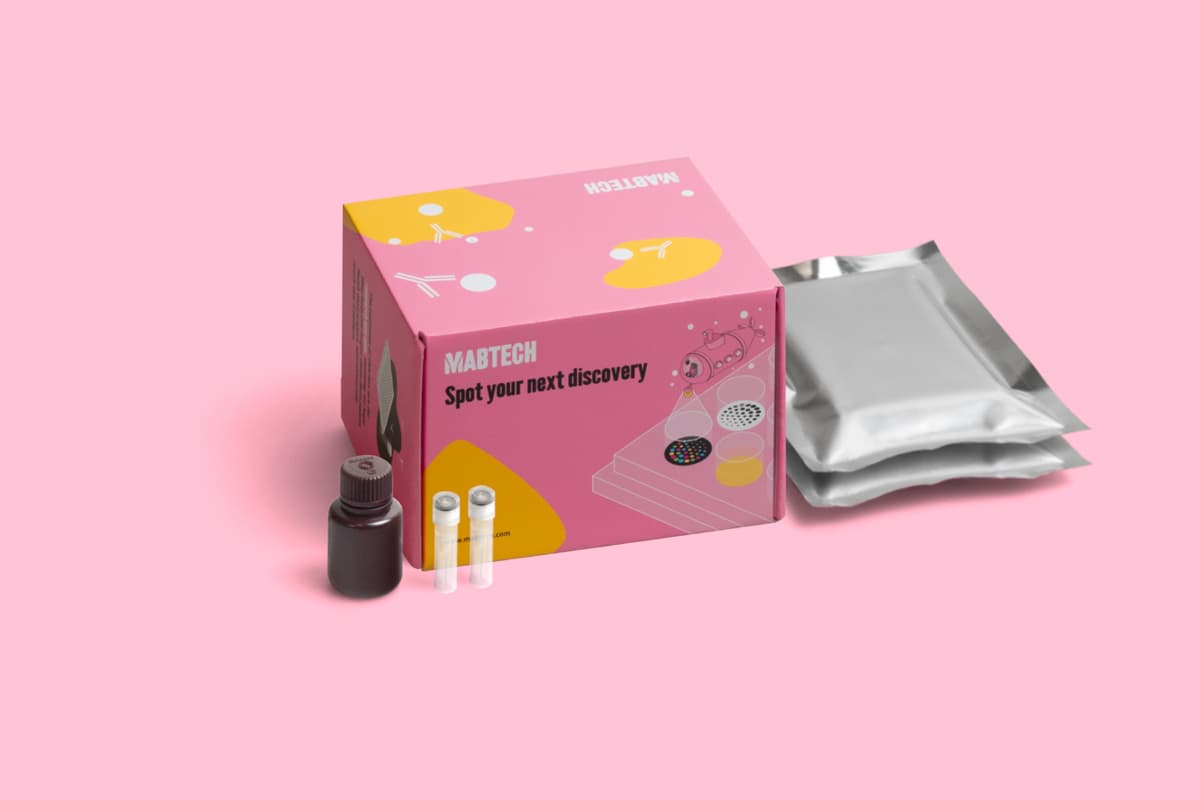ELISpot Plus: Human IL‑27 (ALP)
ELISpot Plus: Human IL‑27 (ALP)
$565
Components
| Plate | Pre-coated ELISpot plate, white MSIP (mAbs MT27/361) |
| Detection mAb | MT140, biotin |
| Enzyme conjugate | Streptavidin-ALP enzyme conjugate for ELISpot |
| Substrate | BCIP/NBT-plus substrate for ELISpot |
In stock
Delivery 4-9 business days
Shipping $0
Performance
Documents
Human IL-12 family mAb guide
Learn how to combine Mabtech’s antibodies for the detection of human IL-12, IL-12/-23 (p40), IL-23, IL-27, and EBI3 in ELISA and ELISpot.
The IL-12 cytokine family
The IL-12 cytokine family consists of IL-12, IL-23, IL-27, IL-35, and IL-39. The existence of IL-39 in human remains, however, to be confirmed. The proteins are heterodimers of different subunits which are either unique or shared by several family members. IL-12 is a heterodimer, (p70), consisting of two covalently linked subunits, p35 and p40. The p40 subunit is shared with IL-23 which is a heterodimer of p40 and a unique p19 subunit. The p40 subunit also exists as a monomer and homodimer. The EBI3 subunit is shared with IL-27, IL-35, and IL-39.
Mabtech supplies monoclonal antibodies with defined subunit specificities to p40, p35, p19, p28, and EBI3. Since both IL-12 and IL-23 heterodimers contain the p40 subunit, capture immunoassays based on antibodies to p40 will detect both cytokines. Such assays can also detect p40 monomers and dimers. The EBI3 assays will detect IL-27, IL-35, and IL-39.
In our IL-12 and IL-23 assays, the same capture antibodies to p40 (MT86/221) are used. Different detection antibodies enable the detection of IL-12 (p70), IL-12/-23 (p40), and IL-23.
Application guide: mAbs to human IL-12, IL-23, IL-27 and EBI3
Get inspired!
Make sure to check out how researchers have used Mabtech's IL-23 ELISA, ELISpot, and FluoroSpot kits in everything from infectious disease research to novel immunotherapies. You can find it all in our Publication database.
Tutorials
Publications (0)
Analyte information
IL-27
| Analyte description | The cytokine interleukin 27 (IL-27) is a member of the IL-12 family. IL-27 is a heterodimer composed of one EBI3 subunit and one p28 subunit. Monocytes, endothelial cells, dendritic cells, and T cells produce it. IL-27 has been described to have both pro-inflammatory and anti-inflammatory properties. |
| Alternative names | Interleukin 27, IL-27, IL27, IL-27AA, IL27p28, IL30, p28, IL-27B, IL27B, IL35B |
| Cell type | Monocyte/MΦ, mDC, NK cell |
| Gene ID | 246778, 10148 |
